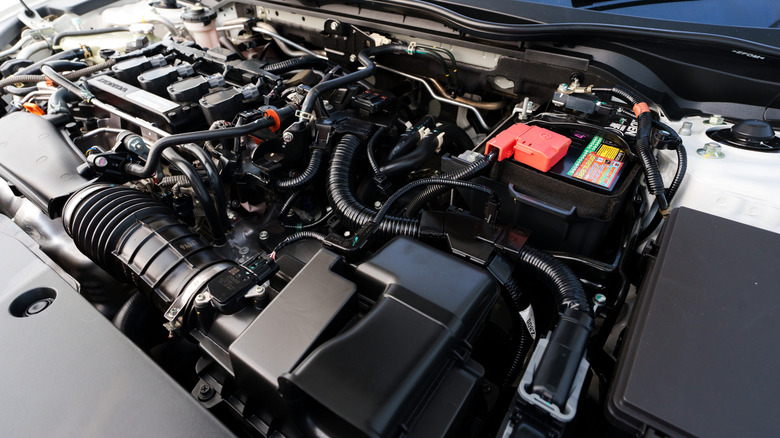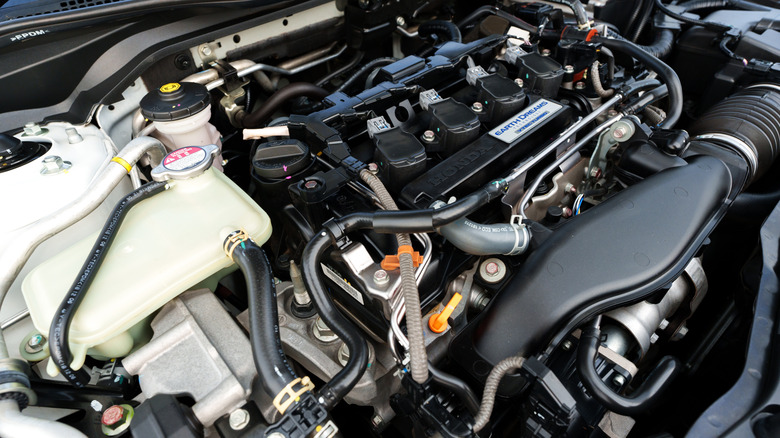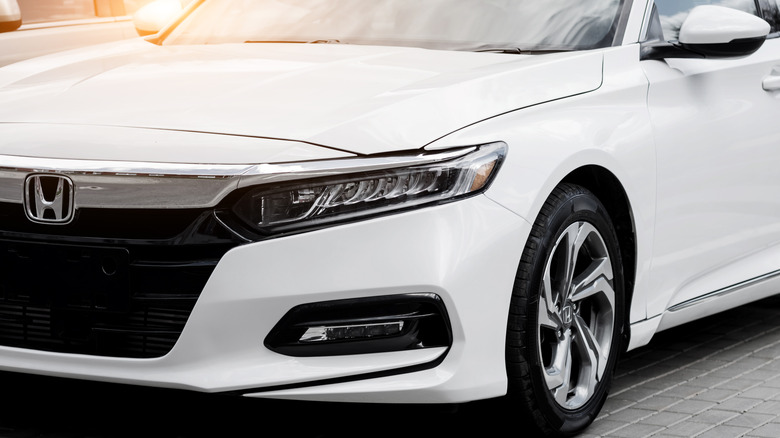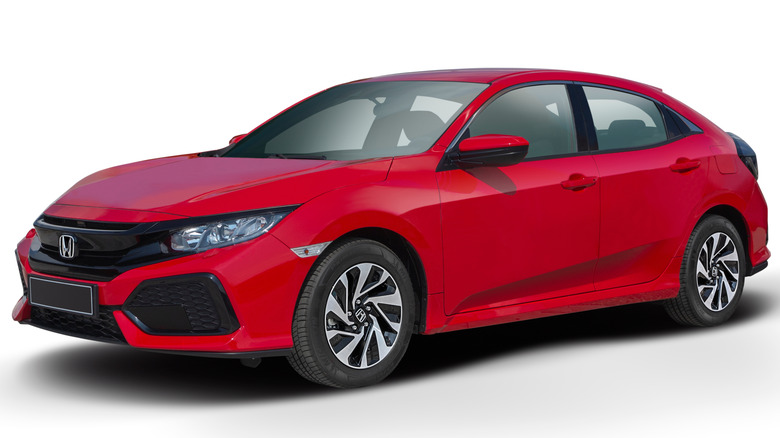How Reliable Is Honda's 1.5L Turbo Engine? Here's What Owners Have To Say
Since its introduction in 2013, Honda has sold more than 3 million units of its turbocharged 1.5-liter four-cylinder engine. Hondas with this line of engine have featured regularly in Kelley Blue Book's Best Buy Awards, often sweeping the top spots, while also performing well in J.D. Power surveys and RAC recommendations. Even our own Editor's Choice award went to the 2025 Honda Civic Si.
Why would Honda be using turbocharged engines on a grand scale? In order to lower carbon emissions and ease the fuel crisis globally, legislation has been pushing carmakers toward smaller capacity engines fitted with turbochargers. This was a big change for Honda fans, as Honda's engines have always been characterized by high-revving naturally aspirated engines that have their best power at the top-end — especially if they had VTEC.
Switching to a turbocharged system resulted in a big change of character, as it meant the best part of the power band now sat in the middle of the rev-range. This also meant that Hondas, which usually focused on elegant simplicity, would now be getting more complicated, with more components to potentially go wrong. So are these engines actually reliable? We'll find out, after some basic specs and history.
Engine history and specifications
Dubbed the L15B and L15C, there are eight versions in total, all of which are part of a broader series of "L" engines that go back as far as 2001. The engine line was first introduced to the U.S. in 2016 with the tenth generation Honda Civic. In North America, it is currently fitted to the Accord, Civic, and CR-V.
Depending on the variant, and whether the car in question is a budget or performance model, these engines produce between 174 horsepower at 6,000 rpm with 162 lb-ft of torque, and 205 horsepower at 5,700 rpm with 192 lb-ft of torque. They all feature direct injection and standard models run on regular unleaded gasoline. A small-diameter single-scroll turbocharger is paired with an electrically actuated wastegate, allowing for higher boost at low engine speeds. Turboboost is between 16.5 and 20.3 PSI, depending on the model.
Honda uses a die-cast aluminum engine block for weight reduction, iron cylinder liners for added durability, and ion-plated piston rings for reduced friction. The dual overhead cam (DOHC) system is chain driven — the cam is supposedly "maintenance free for the life of the engine."
Honda's famous "VTEC" valve timing system was first paired with the 1.5-liter turbo engine in 2018 with the tenth generation Accord, along with an improved exhaust manifold design. This produced 192 horsepower at 5,500 rpm and 192 lb-ft of torque on regular unleaded. In 2023, the sixth generation CRV introduced an idle-stop system for better fuel efficiency, which turns off the engine at traffic lights.
Is it actually reliable?
The short answer is yes, but with an important caveat. Honda owners are still satisfied customers, even with the shift to turbocharging — Edmunds even singled out the 1.5 turbo as the engine to choose over the naturally aspirated 2.0 liter. Looking at the Honda Civic, from 2016 to 2024, we examined reviews of both experts and owners from Kelley Blue Book, cars.com, and Edmunds. The lowest combined reliability score we could find was at Kelley Blue Book, with a respectable 4.2 out of five for the 2022 model. While RepairPal gave that year a 4.5 out of five reliability rating based on 54 reviews, but most complaints were not engine-related. So what's the problem? Oil dilution, and more so than rival brands.
With direct injection, fuel enters the cylinders at a higher pressure than normal port injection. This is great for power and efficiency, but it's easier for unburned fuel to push its way past your piston rings into the crankcase and mix with your oil, causing dilution. If too much dilution is allowed, the viscosity of your oil will be affected, leading to bad lubrication. Owners have reported engine misfires, difficulty starting, and fuel smells in the cabin. But in the worst-case scenario, this could lead to catastrophic engine failure.
People taking too many short trips have exacerbated the problem, as the engine doesn't have time to reach full temperature, leading to more unburned fuel in the system. Honda has issued software updates to get its cars running hotter earlier during operation, and advised owners to take longer journeys to reach full temperature. However, Honda was hit with a lawsuit in 2022, alleging its design is defective and that its advice attempts to "place the blame on drivers."
How do I find a good used one?
The key to a good used car purchase is always evidence of regular maintenance, performed at appropriate intervals. However, this crop of engines is more reliant on regular oil changes than Hondas of old and won't forgive lax servicing. Honda recommends oil change intervals of every 7,500 miles, but if you're having problems related to oil dilution, mechanics like Scotty Kilmer and Shadetree recommend every 5,000 miles. Make sure any owners have received Honda's software updates, which are designed to prevent dilution problems, and ask the owner about their driving habits to make sure they haven't been making lots of short trips on a regular basis.
Our time on Honda forums also revealed a common theme: owners with oil dilution usually lived in colder climates. So if you're worried about the issue, it may be worth buying a car from a warmer region or considering a non-turbo model instead. However, it's worth noting that after surveying hundreds of owner reviews across multiple websites, we only encountered reports of oil dilution problems a handful of times. If you're new to used car buying and need advice, check out our guide on what you need to look out for when buying a used car.



